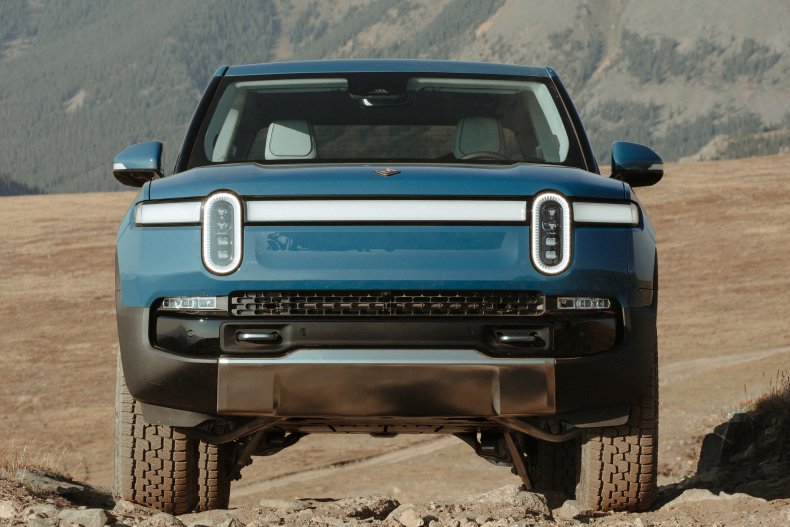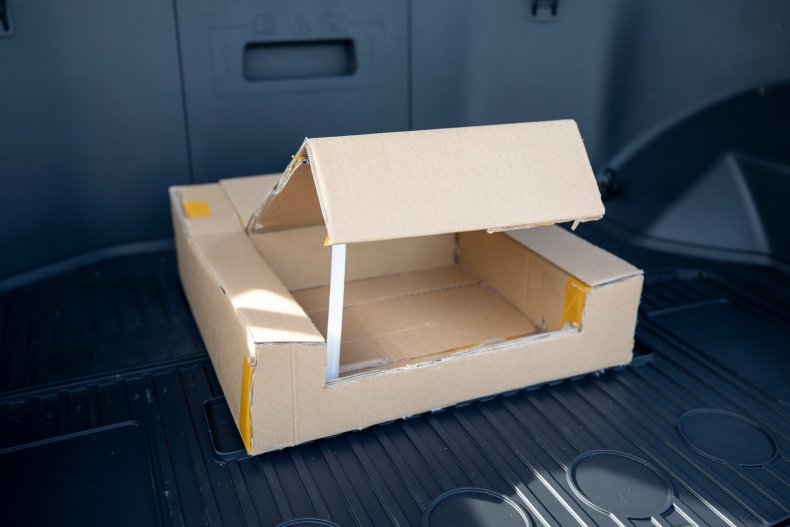Electric Nissan Ariya SUV Trades "Frunk" Space for Passenger Space
The Nissan Ariya electric SUV is on sale now, though sold out through most of the country. Like many electric vehicles (EVs) the Ariya offers two battery sizes, two rows of seats and even two drivetrain layouts (front- and all-wheel). However, it differs from the Lucid Air, Ford Mustang Mach-E, F-150 Lightning and Rivan R1T pickup, because it doesn't have a frunk.
The front trunk storage space, or frunk, is common on EVs because the motors usually aren't located under the hood. The units are much smaller than a gasoline engine and therefore are usually near the wheels they are powering. That leaves extra space for cargo. The Mach-E's the frunk measures 4.7 cubic feet. The Air gets an 7.1 cubic feet and the R1T is has 11 cubic feet.
But the Ariya isn't a pickup, or even a rugged SUV, it's a vehicle meant to appeal to Nissan Murano and Honda CR-V buyers. Their concerns are different.
"The priority was interior cabin space. The space under the hood is where we have stored equipment normally found inside a traditional vehicle, such as the air conditioning unit. Thanks to the EV platform and architecture, we gain significant space in the interior by having an ultra-slim instrument panel and increased legroom versus a standard internal combustion engine vehicle – allowing a compact crossover to have the interior space of a midsize vehicle," Aditya Jairaj, senior director, EV strategy and transformation told Newsweek.

Lucid engineers saw it a different way, but agreed that use of space is very important. It was always a forgone conclusion that the Air sedan would have a front trunk.
"We were as deliberate as you can possibly be when planning the Lucid Air's frunk, to the degree that we fully intended to create a space that was best in class by a large degree. It's important to note that space utilization is a bit of a religion at this company," Derek Jenkins, Lucid's senior vice president of design and brand told Newsweek.
Lucid obsessed over the entire vehicle aiming at class-leading storage space. Between the frunk, trunk and folding rear seats it has achieved that. On the frunk specifically, it says it obsessed over every cubic millimeter.
Rivian too always planned for extra frunk space, in addition to its useful gear tunnel, which runs from side to side between the bed and the cab of the R1T pickup. When designing the front trunk it noted that as useful as trucks are, some normal tasks are more difficult. For instance, grocery shopping.

"For a vehicle that is designed to carry things, it is difficult because you don't want to put the items in the bed because they will roll around or be exposed to the elements, if you put them inside the vehicle, you lose space for passengers. So, we wanted a solution that could solve basic day to day use in combination with the gear tunnel," Jeff Hammoud, head of Rivian design told Newsweek.
Rivian found that the front trunk area is mainly used for groceries, backpacks and bags, jackets, coolers and luggage. It even put a drain plug in the space to make the entire thing a cooler if necessary.
Ford has pictures from frunk-enthusiast message boards of people using the MPF (mega power frunk) on the F-150 Lightning. One owner used it and its power outlets as movie screen. A hunter stored his ducks in the 14.1-cubic-foot space after a day in the wild. Using it as a cooler is common with Ford too.
Ford's frunk was originally prototyped in cardboard, while engineers and designers tried to understand the needs of its buyers. Ford brought that hot-glued piece of cardboard across the country and put it in customer hands. That's why the MPF has a drain, and why it's asymmetrical, to fit two golf bags. Ford still wanted a "wow" factor, so it added lights and power outlets.

Lucid doesn't have data on how often its front trunk is used, but says that consumers have been aware of the front trunk in mid- and rear-engine cars for years, and that they expect it. It also wouldn't make sense, for aerodynamics or safety just to delete the space or reshape it.
"Even when designing an EV with a small motor at the nose – or in some cases with a single rear drive unit, no motor in the front – you still need the front of the car to be used for crash safety systems. In the Lucid Air, front seat passengers are moved forward as much as possible, but you can't have them sitting between the front wheels because the front of the car needs to be a certain length," said Jenkins.
"Even with that effort in maximizing main cabin space, as well as Lucid's Air's low nose for maximum aero efficiency, we were still left with this tremendous space and it just made sense to use it for cargo space," he said.
Rivian's Hammoud agrees and adds that it doesn't think it would gain much space for people anyway, also, a pickup would just look weird without a squared frunk.
The Rivian R1T, Lucid Air and Nissan Ariya cater to different buyers at wildly different price points of the market. The Ariya SUV has a base price of about $43,000. The Lucid Air Grand Touring Performance starts at $179,000 before options. The front trunk is just the latest way electric vehicles are rewriting norms, buyer won't have a shortage of options.








